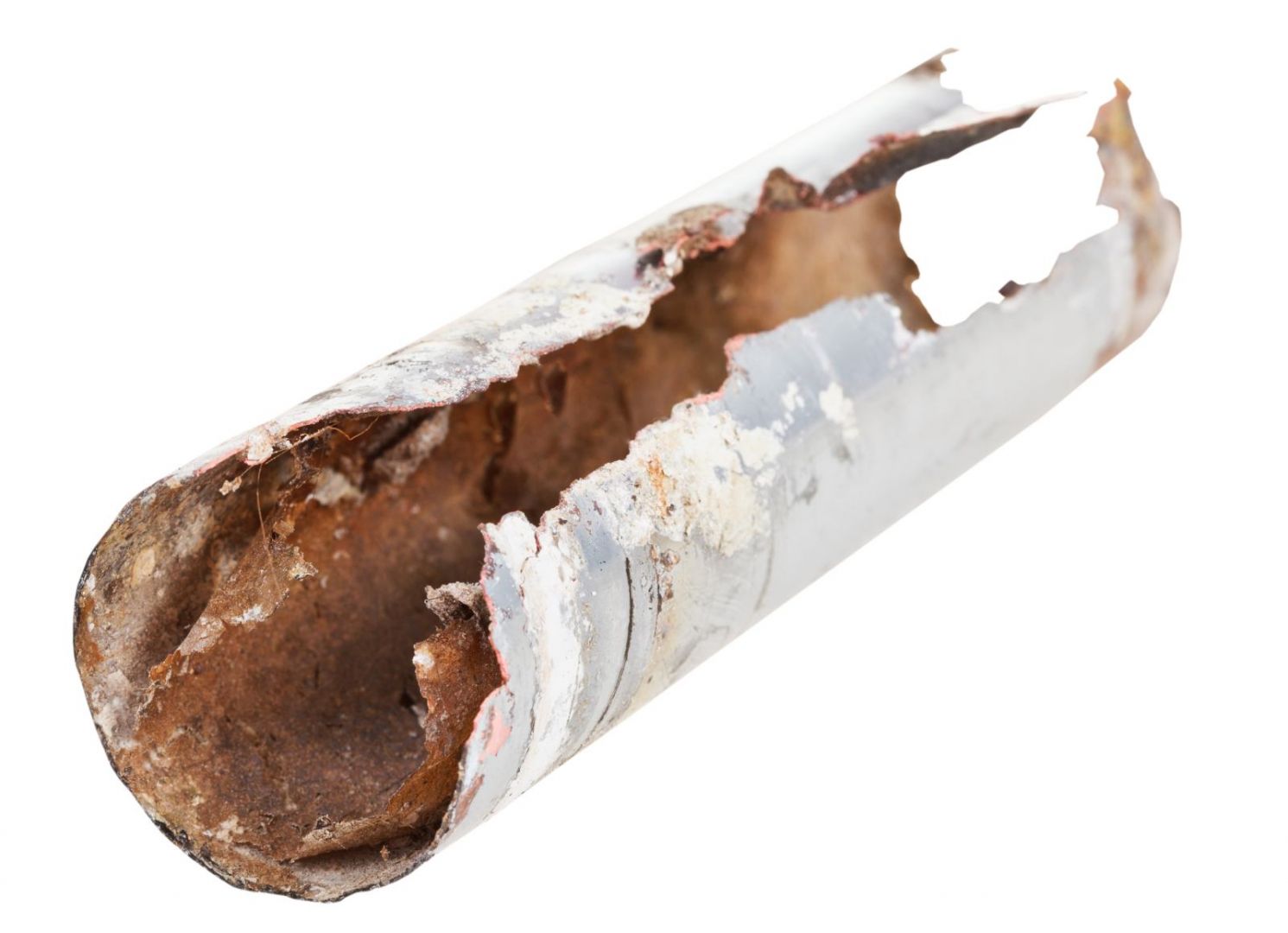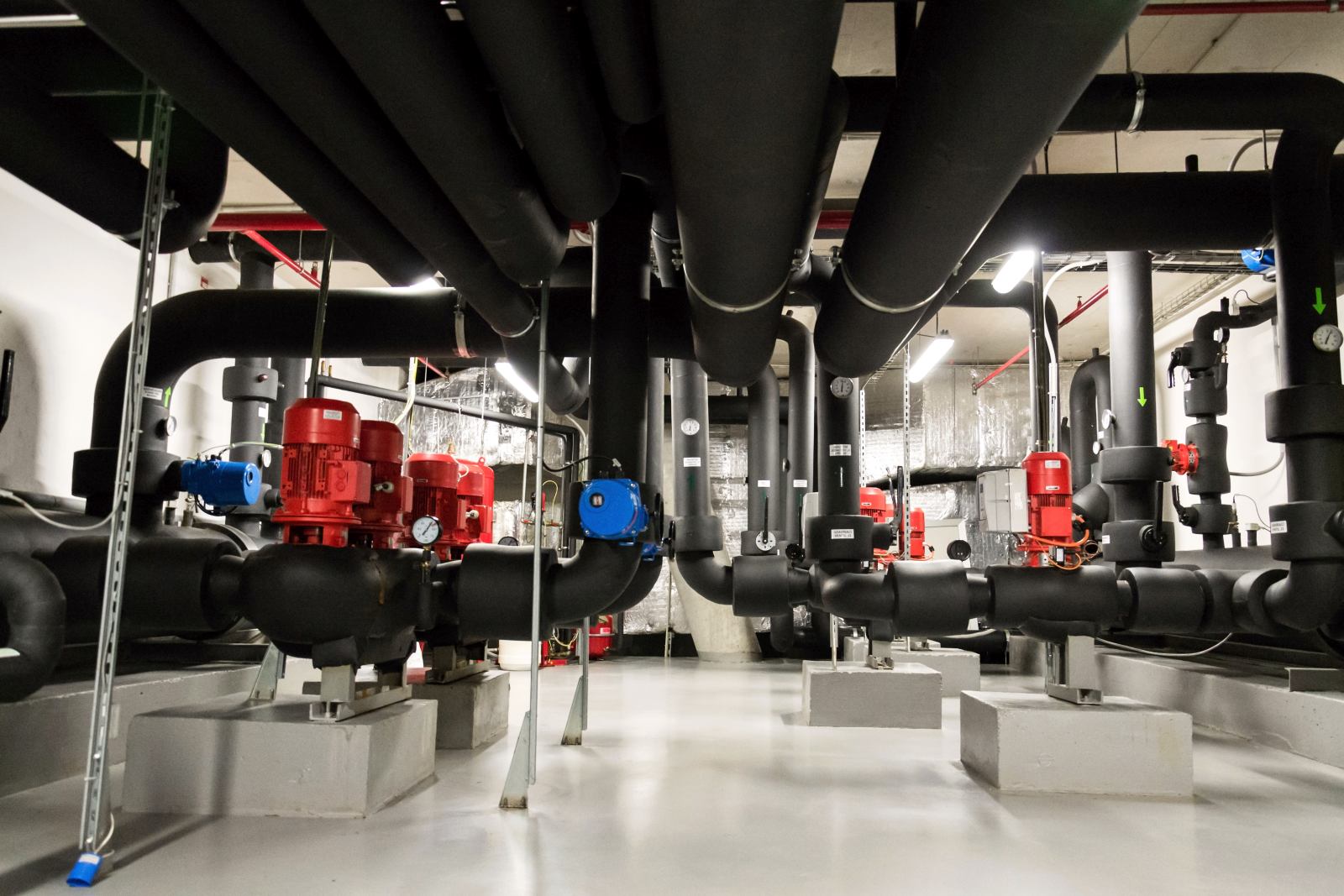CLOSED COOLING LOOPS
In principle, two main types of circulating cooling systems are distinguished:
- Open cooling system with evaporative cooling tower
- Closed cooling circuits
In the case of open cooling circuits (by definition), the essence is that the evaporating heat of the flowing water is used for cooling. In contrast, closed circuits do not obtain the cooling effect from the evaporating heat, but are most often cooled by a secondary cooling unit. This means that no water from closed circulation systems is evaporated for cooling. At circulating temperatures above 5°C, water is not always selected as the cooling medium. Unlike open systems, water quality and quantity change only negligibly.

In practice, it is not always possible to prevent the circulating water from coming into contact with the atmosphere or with another medium, ie. that a closed cooling system is usually not "hermetically" sealed in this sense. As a result, water often contains impurities of various kinds. However, there is usually a sudden loss of water, such as when changing tools or moulds.
Closed cooling circuits are usually used where, due to design reasons, the open system cannot reach the required cooling temperature (<18° C) and a cooling unit must be used. However, even at cooling circuit temperatures above 30° C, closed cooling circuits are often used in conjunction with dry cooling (air cooler) or are used to save energy in heat recovery systems. At the same time, a certain amount of waste heat is used for heating in other devices.
The great advantage of a closed circulation circuit is that it can use high-quality corrosion protection of the cooling system in order to protect expensive machines and thus ensure the required operational reliability and economy. Efficient and trouble-free operation of the entire cooling system is of great importance for maximum operational reliability and production functionality.
However, the use of water as a coolant in closed systems brings with it three technical problems in practice:
- Corrosive effects of water on the materials used
- Coating and subsequent corrosion due to microorganisms
- Formation of inorganic deposits
Depending on the use of different materials (non-ferrous metals, steel, ...) in cooling systems and due to specific operating conditions (eg temperature, equipment size, ...) and last but not least due to water quality in cooling systems it is necessary to carry out individual water treatment.
Untreated water has primarily corrosive effects on iron-containing materials. Non-ferrous metals (copper, brass,…) are also attacked if the water contains oxygen and chlorides. And this is almost the case. Professional and timely use of corrosion inhibitors allows the formation of a protective layer on the surface of the material and thus reduces the aggressiveness of water.
Due to particularly favourable living conditions (temperature, high nutrient content), bacteria (occasionally also algae) multiply very quickly under certain conditions. The growth of aerobic microbes is caused by the fact that the cooling water is, depending on the configuration of the circuit, in occasional or permanent contact with the atmosphere or with the cooled product.
However, also in the absence of oxygen, anaerobic microbes can form, which are contained in coatings from metabolic products. These then create surface erosion if preventive measures are not taken.
This results in subsequent negative effects in the system, such as poor heat transfer or poor hygiene, especially when operators come into contact with cooling water. Only thorough cooling water quality control and effective disinfectants can ensure reliable operation of the equipment.
Due to the fact that closed cooling circuits are usually not completely sealed against contact with the atmosphere, the formation of coatings containing limestone is often a critical point of these circuits, especially when the dissolved CO2 gasifiers due to the elevated temperature. This creates the risk that limestone will rapidly settle on the walls of the heat exchangers at higher operating temperatures and impair its efficiency. We can prevent this by partially softening the water or adding hardness stabilizers.
Another negative phenomenon on the surface of exchangers is the formation of organic mucous coatings, which then act as insulators.
Formation of scale significantly increases energy consumption
Experiments have shown that even with a slime coating thickness of 0.1 mm, the heat transfer deteriorates by approx. 5-8%. With a slime coating thickness of 1 mm, the efficiency is reduced by approx. 20-25%. Comparable power loss occurs with calcium coatings that form on the walls of heat exchangers. In these cases, the cooling water flow must be increased to supply the same amount of heat. This requires significantly higher pump performance and, as a result, greater electricity consumption.
Another undesirable phenomenon occurs when dissolving various deposits, the small or larger particles of which enter the cooling system circuit. Clogging and damage to fast-moving parts of the system, such as circulation pumps, are common causes of unexpected malfunctions. Subsequently, production outages occur if the heat generated by the operation of the machines is not sufficiently dissipated.
Calcium deposits can be removed relatively easily without interruption of operation, while mucous bacterial coatings usually require higher cleaning requirements and it is therefore necessary to prevent their formation. To optimize the heat transfer on the walls of the heat exchangers and for energy-efficient operation, thorough water care in closed cooling circuits is as essential as the maintenance of basic production equipment.

Your advantages in the consistent care of closed cooling systems are:
- Corrosion protection based on the formation of a protective layer on the surface of the material.
- Protection against the formation of unwanted deposits by adding hardness stabilizers.
- Improved hygiene due to effective and controlled microbial control.
This means:
- Extended equipment life due to corrosion protection
- No or significantly reduced cleaning requirements
- Increased operational reliability
- Cost savings
An example of IceCO’s care program for closed cooling systems
One of the possible care concepts for closed cooling systems can be summarized in 4 steps:
Step 1: Basic cleaning
If it is necessary to remove calcium deposits, we suggest dosing Decalcit T 131 or Decalcit T 610 into the water of the cooling system and letting the water circulate so that it is aerated and so that the CO2 evaporates. Then flush the circulation circuit several times.
Step 2: Putting the closed cooling system into operation
Fill the cooling circuit, if possible, with treated water. Simultaneously dose proportionally the respective inhibitor with corrosion protection in combination with the biocide.
Step 3: Continuous operation
The dosage of the inhibitor into the added water takes place proportionally on the basis of the measurement with a contact water meter. The addition of the biocide is carried out on the basis of microbiological contamination by means of a timer or by means of a dosing device at regular intervals.
Step 4: Water change
Depending on the operating time and system requirements, the process water should be changed approximately once a year. Especially if both organic and inorganic substances accumulate in the water circuit due to production. Then the cleaning described in point 1 should be repeated.


